Stages of Project Life Cycle and Importance to Project Success
43 Pages10777 Words86 Views
Added on 2023-02-07
About This Document
This document discusses the stages of the project life cycle and their significance in achieving project success. It also examines the factors to be considered when creating a project management plan.
Stages of Project Life Cycle and Importance to Project Success
Added on 2023-02-07
ShareRelated Documents
University of Greenwich
ASSIGNMENT 1 FRONT SHEET
Qualification BTEC Level 4 HND Diploma in Business
Unit number and title Unit 6:Management a Successful Business Project (5039)
Submission date 12/12/2022 Date received (1 st submission)
Re-submissiondate Date received (2 nd submission)
Student name Dang Khanh Linh Student ID GBD210211
Class GBD1004 Assessor name Vo Cong Nghia
Student declaration
I certify that the assignment submission is entirely my own work and I fully understand the consequences of plagiarism. I understand that
making a false declaration is a form of malpractice.
Student’s signature:
Linh
Grading grid
P1 P2 P3 P4 P5 M1 M2 M3 D1 D2
ASSIGNMENT 1 FRONT SHEET
Qualification BTEC Level 4 HND Diploma in Business
Unit number and title Unit 6:Management a Successful Business Project (5039)
Submission date 12/12/2022 Date received (1 st submission)
Re-submissiondate Date received (2 nd submission)
Student name Dang Khanh Linh Student ID GBD210211
Class GBD1004 Assessor name Vo Cong Nghia
Student declaration
I certify that the assignment submission is entirely my own work and I fully understand the consequences of plagiarism. I understand that
making a false declaration is a form of malpractice.
Student’s signature:
Linh
Grading grid
P1 P2 P3 P4 P5 M1 M2 M3 D1 D2
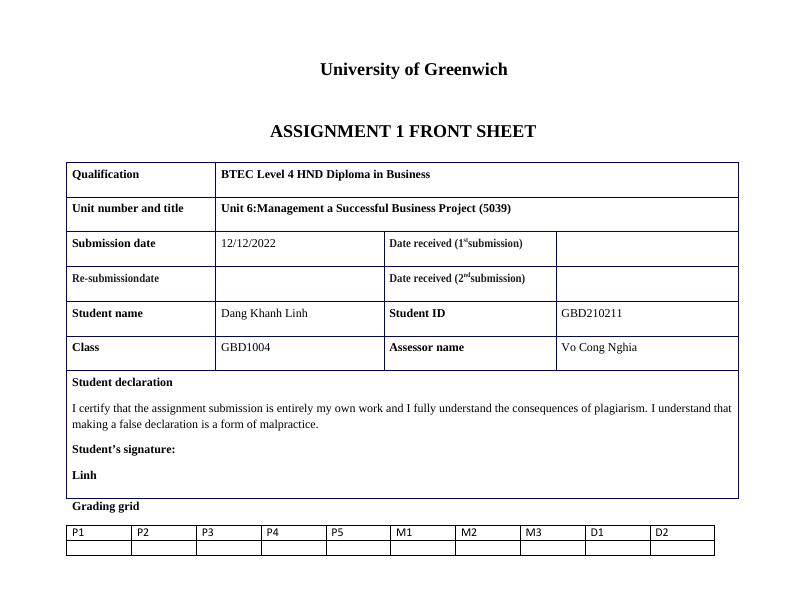
Summative Feedbacks: Resubmission Feedbacks:
Grade: AssessorSignature: Date:
InternalVerifier’sComments:
Signature&Date:
Grade: AssessorSignature: Date:
InternalVerifier’sComments:
Signature&Date:
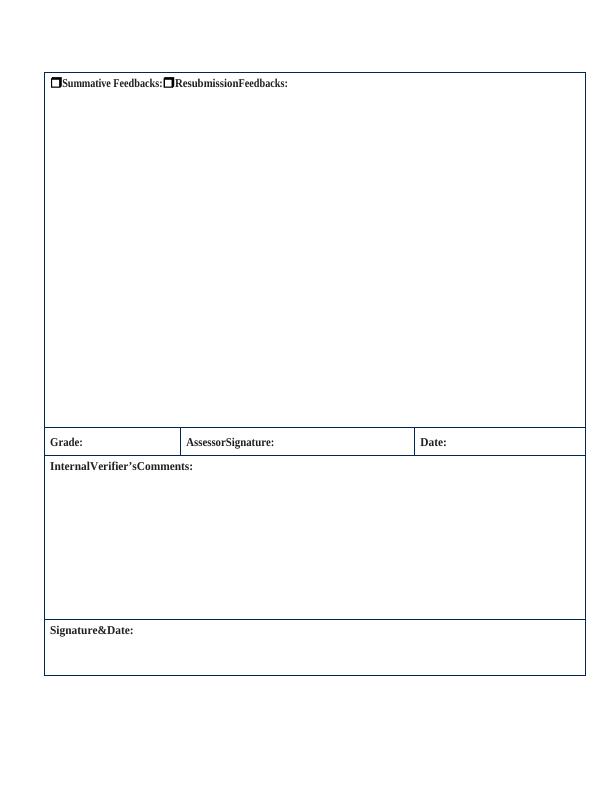
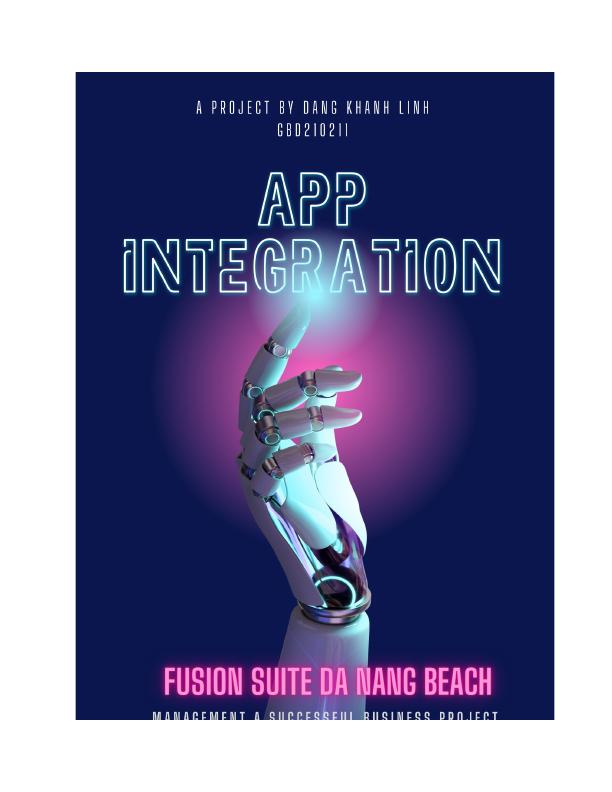
Table of Contents
List of table............................................................................................................................................5
List of figures.........................................................................................................................................5
1. Introduction...................................................................................................................................6
2. Explain and evaluate the stages of the project life cycle (PLC) and their importance to the success
of a project............................................................................................................................................6
2.1 Definition.....................................................................................................................................................6
2.2 The Project Management Lifecycle’s steps...................................................................................................6
2.3 The importances of project life cycle............................................................................................................9
3. Examine the factors to be considered when compiling a project management plan (PMP)...........10
3.1 Project management and project management plan..............................................................................................10
3.2 Project aims and objectives......................................................................................................................................11
3.3 Project scope management......................................................................................................................................11
3.4 Milestones.................................................................................................................................................................13
3.5 Work breakdown structure (WBS)............................................................................................................................13
3.6 Cost estimations.......................................................................................................................................................14
3.7 Quality management................................................................................................................................................15
3.8 Risk management.....................................................................................................................................................16
3.9 Stakeholder communication.....................................................................................................................................17
1. Examine and evaluate a range of research methods and strategies and their importance to project
management.......................................................................................................................................18
4.1 Primary research........................................................................................................................................18
4.2 Secondary research..............................................................................................................................19
2. Research method which includes both primary and secondary data collection plan......................21
a. Primary research......................................................................................................................................21
b. Secondary research..................................................................................................................................26
3. Produce a project management plan............................................................................................27
a. General about the company.....................................................................................................................27
b. About the project.....................................................................................................................................27
c. Project aim/ objects.................................................................................................................................28
d. Cost..........................................................................................................................................................28
e. Scope........................................................................................................................................................29
f. Timetable.................................................................................................................................................29
List of table............................................................................................................................................5
List of figures.........................................................................................................................................5
1. Introduction...................................................................................................................................6
2. Explain and evaluate the stages of the project life cycle (PLC) and their importance to the success
of a project............................................................................................................................................6
2.1 Definition.....................................................................................................................................................6
2.2 The Project Management Lifecycle’s steps...................................................................................................6
2.3 The importances of project life cycle............................................................................................................9
3. Examine the factors to be considered when compiling a project management plan (PMP)...........10
3.1 Project management and project management plan..............................................................................................10
3.2 Project aims and objectives......................................................................................................................................11
3.3 Project scope management......................................................................................................................................11
3.4 Milestones.................................................................................................................................................................13
3.5 Work breakdown structure (WBS)............................................................................................................................13
3.6 Cost estimations.......................................................................................................................................................14
3.7 Quality management................................................................................................................................................15
3.8 Risk management.....................................................................................................................................................16
3.9 Stakeholder communication.....................................................................................................................................17
1. Examine and evaluate a range of research methods and strategies and their importance to project
management.......................................................................................................................................18
4.1 Primary research........................................................................................................................................18
4.2 Secondary research..............................................................................................................................19
2. Research method which includes both primary and secondary data collection plan......................21
a. Primary research......................................................................................................................................21
b. Secondary research..................................................................................................................................26
3. Produce a project management plan............................................................................................27
a. General about the company.....................................................................................................................27
b. About the project.....................................................................................................................................27
c. Project aim/ objects.................................................................................................................................28
d. Cost..........................................................................................................................................................28
e. Scope........................................................................................................................................................29
f. Timetable.................................................................................................................................................29
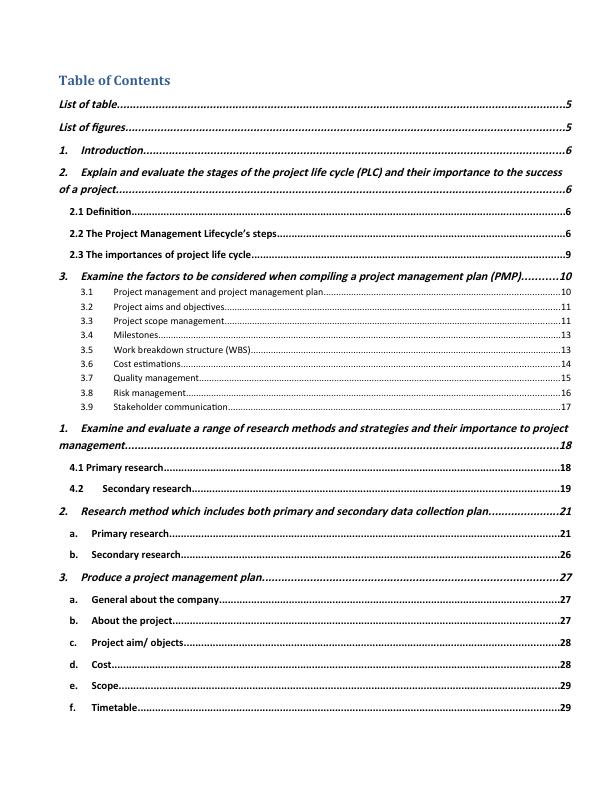
g. Milestone schedule..................................................................................................................................31
h. Quality......................................................................................................................................................31
i. Risks.........................................................................................................................................................32
j. Resources.................................................................................................................................................33
k. Communication plan................................................................................................................................34
4. Work breakdown stucture (WBS) and Grantt chart.......................................................................35
a. Work breakdown structure (WBS)............................................................................................................35
b. Grantt chart..............................................................................................................................................36
5. Weeky logbooks...........................................................................................................................36
6. Conclusion....................................................................................................................................41
7. References....................................................................................................................................42
List of tables
Table 1: Cost of the project.......................................................................................................................................27
Table 2:Timetable of the project...............................................................................................................................28
Table 3:Risks and solusions of the project.................................................................................................................30
Table 4:Resources of the project...............................................................................................................................30
List of figures
Figure 1: The project life cycle (Source: eduCBA.com)................................................................................................8
Figure 2: Project scope management (Source: Kissflow.com)...................................................................................11
Figure 3: Milestone example (source: Edrawmind.com)...........................................................................................12
Figure 4: Work breakdown structure example (Source: Forbes.com).......................................................................13
Figure 5: Principles of quality management (Source: CFI.COM)................................................................................15
Figure 6: The risk management process (Source: Lucy,2022)....................................................................................16
Figure 7: List of questionare......................................................................................................................................24
Figure 8: Logo of Fusion suites..................................................................................................................................26
Figure 9:Milestone schedule......................................................................................................................................29
Figure 10: Work breakdown structure (WBS) of the project.....................................................................................32
Figure 11: Gantt chart of the project.........................................................................................................................33
h. Quality......................................................................................................................................................31
i. Risks.........................................................................................................................................................32
j. Resources.................................................................................................................................................33
k. Communication plan................................................................................................................................34
4. Work breakdown stucture (WBS) and Grantt chart.......................................................................35
a. Work breakdown structure (WBS)............................................................................................................35
b. Grantt chart..............................................................................................................................................36
5. Weeky logbooks...........................................................................................................................36
6. Conclusion....................................................................................................................................41
7. References....................................................................................................................................42
List of tables
Table 1: Cost of the project.......................................................................................................................................27
Table 2:Timetable of the project...............................................................................................................................28
Table 3:Risks and solusions of the project.................................................................................................................30
Table 4:Resources of the project...............................................................................................................................30
List of figures
Figure 1: The project life cycle (Source: eduCBA.com)................................................................................................8
Figure 2: Project scope management (Source: Kissflow.com)...................................................................................11
Figure 3: Milestone example (source: Edrawmind.com)...........................................................................................12
Figure 4: Work breakdown structure example (Source: Forbes.com).......................................................................13
Figure 5: Principles of quality management (Source: CFI.COM)................................................................................15
Figure 6: The risk management process (Source: Lucy,2022)....................................................................................16
Figure 7: List of questionare......................................................................................................................................24
Figure 8: Logo of Fusion suites..................................................................................................................................26
Figure 9:Milestone schedule......................................................................................................................................29
Figure 10: Work breakdown structure (WBS) of the project.....................................................................................32
Figure 11: Gantt chart of the project.........................................................................................................................33

1. Introduction
For the purpose of restoring the financial position of the company in the context of the difficult economic
situation. Companies in the tourism industry have been and continue to make changes and strategies to adapt to
the epidemic situation, increasing the company's strength. Many options for transforming workplaces,
transforming store spaces or applying smart technology are proposed by many companies. This report is a project
developed based on opinions and data collected from the survey. As for Fusion Suite Da Nang Beach, this project
will be through the development of a digital marketing model called "App Integration" compatible with
applications on smartphones and tablets. The hotel website is compact with the smallest capacity but still full of
information about the hotel, easy to display and interact on smart devices to increase the competitiveness of
hotels in Da Nang.
2. Explain and evaluate the stages of the project life cycle (PLC) and
their importance to the success of a project.
2.1 Definition
The project management lifecycle is a step-by-step framework of best practices used to shepherd a project from
its beginning to its end. It offers project managers a methodical way to plan, carry out, and complete a project
(Coursera, 2022).
2.2 The Project Management Lifecycle’ssteps
1. Initiating
The project will be defined during the start phase. It will be determined what roles are required on the team and
what the project's objectives, scope, and resource requirements are. The project and team will have clear
direction if stakeholders' expectations are made explicit, along with the specific goals of the project and their
justifications (Pinto,2019).
The success of the project depends on this stage. Without clarity regarding what must be accomplished and why,
the project runs the danger of failing to meet stakeholders' expectations and the project's final goals.
Some steps in the initiation phase include:
Communicating with stakeholders to understand the purpose and desired outcomes of the project
Identifying project scope
Determining SMART goals (specific, measurable, achievable, relevant, and time-bound)
Clarifying resources like budget and time constraints
Confirming team size and roles required
Determining how often and which stakeholders will be involved throughout the project
Compiling a project proposal and project charter
For the purpose of restoring the financial position of the company in the context of the difficult economic
situation. Companies in the tourism industry have been and continue to make changes and strategies to adapt to
the epidemic situation, increasing the company's strength. Many options for transforming workplaces,
transforming store spaces or applying smart technology are proposed by many companies. This report is a project
developed based on opinions and data collected from the survey. As for Fusion Suite Da Nang Beach, this project
will be through the development of a digital marketing model called "App Integration" compatible with
applications on smartphones and tablets. The hotel website is compact with the smallest capacity but still full of
information about the hotel, easy to display and interact on smart devices to increase the competitiveness of
hotels in Da Nang.
2. Explain and evaluate the stages of the project life cycle (PLC) and
their importance to the success of a project.
2.1 Definition
The project management lifecycle is a step-by-step framework of best practices used to shepherd a project from
its beginning to its end. It offers project managers a methodical way to plan, carry out, and complete a project
(Coursera, 2022).
2.2 The Project Management Lifecycle’ssteps
1. Initiating
The project will be defined during the start phase. It will be determined what roles are required on the team and
what the project's objectives, scope, and resource requirements are. The project and team will have clear
direction if stakeholders' expectations are made explicit, along with the specific goals of the project and their
justifications (Pinto,2019).
The success of the project depends on this stage. Without clarity regarding what must be accomplished and why,
the project runs the danger of failing to meet stakeholders' expectations and the project's final goals.
Some steps in the initiation phase include:
Communicating with stakeholders to understand the purpose and desired outcomes of the project
Identifying project scope
Determining SMART goals (specific, measurable, achievable, relevant, and time-bound)
Clarifying resources like budget and time constraints
Confirming team size and roles required
Determining how often and which stakeholders will be involved throughout the project
Compiling a project proposal and project charter
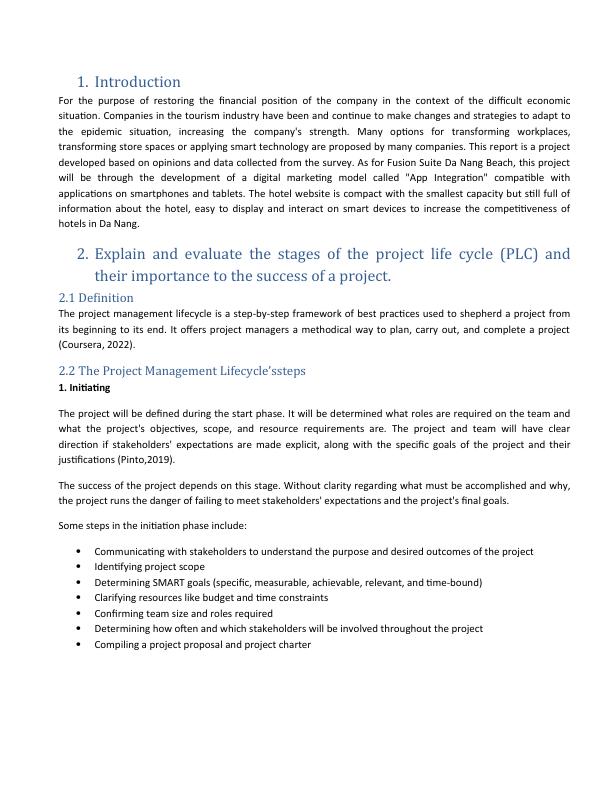
Tools and documents used in the initiation phase can include:
Project proposal: The project proposal defines a project and outlines key dates, requirements, and goals.
Project charter: This is a definitive document that describes the project and main details necessary to
reach its goals. This can include potential risks, benefits, constraints, and key stakeholders.
RACI chart: A RACI chart plots the roles and responsibilities of members on a project team.
2. Planning
Establishing source materials, relevant documentation, deadlines, and milestones. This step also entails estimating
and forecasting risk, implementing change management procedures, and laying out communication guidelines
(Pinto,2019).
The planning phase can include the following steps:
Deciding on milestones that lead up to goal completion
Developing a schedule for tasks and milestones, including time estimates and potential time buffers
Establishing change processes
Determining how and how often to communicate with team members and stakeholders
Creating and signing documents such as non-disclosure agreements (NDAs) or requests for proposal (RFPs)
Assessing and managing risk by creating a risk register
Holding a kick-off meeting to start project
Tools might use in a this phase include:
Gantt chart: A horizontal bar chart in which members can see what tasks must be completed in what
order, and how long each is expected to take.
Risk register: A chart that lists risks associated with the project, along with their probability, potential
impact, risk level, and mitigation plans.
3. Execute and complete tasks
A project's execution entails carrying out your plan and directing the crew. For the most part, this entails
monitoring and measuring progress, maintaining quality, reducing risk, managing the budget, and using data to
inform your decisions (Pinto,2019).
Specific steps might include:
Using tools like GANTT or burndown charts to track progress on tasks
Responding to risks when they manifest
Recording costs
Keeping team members motivated and on task
Keeping stakeholders informed of progress
Incorporating changes via change requests
Some tools might use include:
Project proposal: The project proposal defines a project and outlines key dates, requirements, and goals.
Project charter: This is a definitive document that describes the project and main details necessary to
reach its goals. This can include potential risks, benefits, constraints, and key stakeholders.
RACI chart: A RACI chart plots the roles and responsibilities of members on a project team.
2. Planning
Establishing source materials, relevant documentation, deadlines, and milestones. This step also entails estimating
and forecasting risk, implementing change management procedures, and laying out communication guidelines
(Pinto,2019).
The planning phase can include the following steps:
Deciding on milestones that lead up to goal completion
Developing a schedule for tasks and milestones, including time estimates and potential time buffers
Establishing change processes
Determining how and how often to communicate with team members and stakeholders
Creating and signing documents such as non-disclosure agreements (NDAs) or requests for proposal (RFPs)
Assessing and managing risk by creating a risk register
Holding a kick-off meeting to start project
Tools might use in a this phase include:
Gantt chart: A horizontal bar chart in which members can see what tasks must be completed in what
order, and how long each is expected to take.
Risk register: A chart that lists risks associated with the project, along with their probability, potential
impact, risk level, and mitigation plans.
3. Execute and complete tasks
A project's execution entails carrying out your plan and directing the crew. For the most part, this entails
monitoring and measuring progress, maintaining quality, reducing risk, managing the budget, and using data to
inform your decisions (Pinto,2019).
Specific steps might include:
Using tools like GANTT or burndown charts to track progress on tasks
Responding to risks when they manifest
Recording costs
Keeping team members motivated and on task
Keeping stakeholders informed of progress
Incorporating changes via change requests
Some tools might use include:
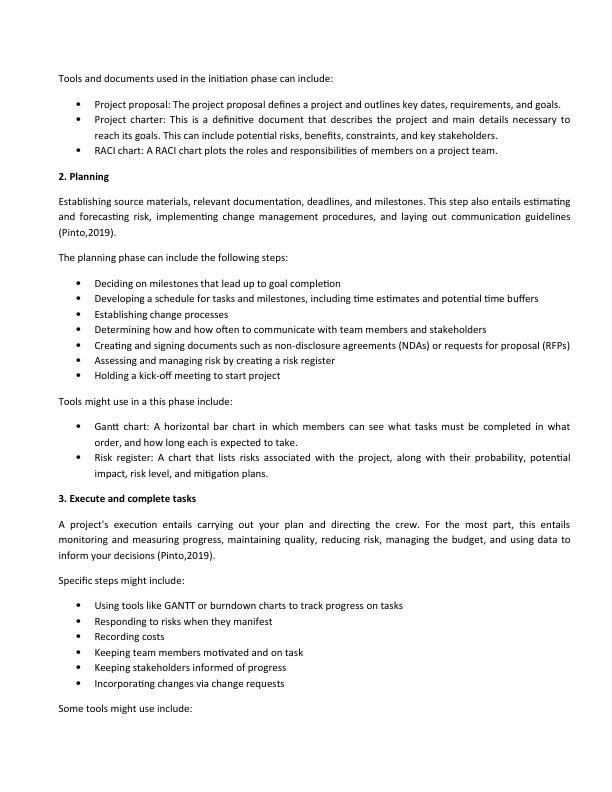
Change requests: These are documents used to propose changes to a project’s scope or goals
Burndown chart: This chart breaks down tasks on a granular level and visualizes the amount of time
remaining
4. Close projects
You'll finish up project activities during the closing phase of the project management lifecycle, turn the final good
or service on to the new owners, and evaluate what went well and what didn't (Pinto,2019).
Steps in the closing phase can include:
Conducting retrospectives and take notes of changes you can implement in the future
Communicating to stakeholders of the end of the project and providing an impact report
Communicating with the new owners of a project
Creating a project closeout report
Celebrating the end of the project and your successes
Tools used in the closing phase include:
Impact report: This report compiles a series of metrics that showcase how your project made a difference
and is presented to your stakeholders.
Project closeout report: A project closeout report provides a summary of your project’s accomplishments,
and provides key learnings for future project managers to reference.
Figure 1: The project life cycle (Source: eduCBA.com)
Burndown chart: This chart breaks down tasks on a granular level and visualizes the amount of time
remaining
4. Close projects
You'll finish up project activities during the closing phase of the project management lifecycle, turn the final good
or service on to the new owners, and evaluate what went well and what didn't (Pinto,2019).
Steps in the closing phase can include:
Conducting retrospectives and take notes of changes you can implement in the future
Communicating to stakeholders of the end of the project and providing an impact report
Communicating with the new owners of a project
Creating a project closeout report
Celebrating the end of the project and your successes
Tools used in the closing phase include:
Impact report: This report compiles a series of metrics that showcase how your project made a difference
and is presented to your stakeholders.
Project closeout report: A project closeout report provides a summary of your project’s accomplishments,
and provides key learnings for future project managers to reference.
Figure 1: The project life cycle (Source: eduCBA.com)

End of preview
Want to access all the pages? Upload your documents or become a member.
Related Documents
Project Management Assignment PDFlg...
|35
|5405
|67
Construction of a Solar Energy System: Project Managementlg...
|40
|6093
|199
Unit 11 Research Project: Assignmentlg...
|46
|13848
|109
Management Project: Developing a Mobile Application for a Food Businesslg...
|51
|12009
|1
Unit 06: Managing a Successful Computing Projectlg...
|31
|5543
|502
Project Managementlg...
|27
|5608
|70
